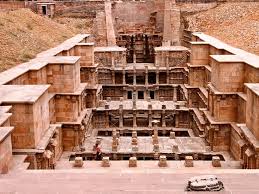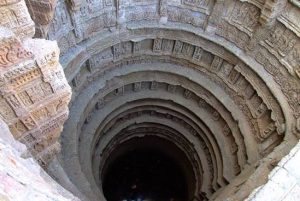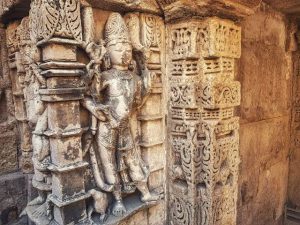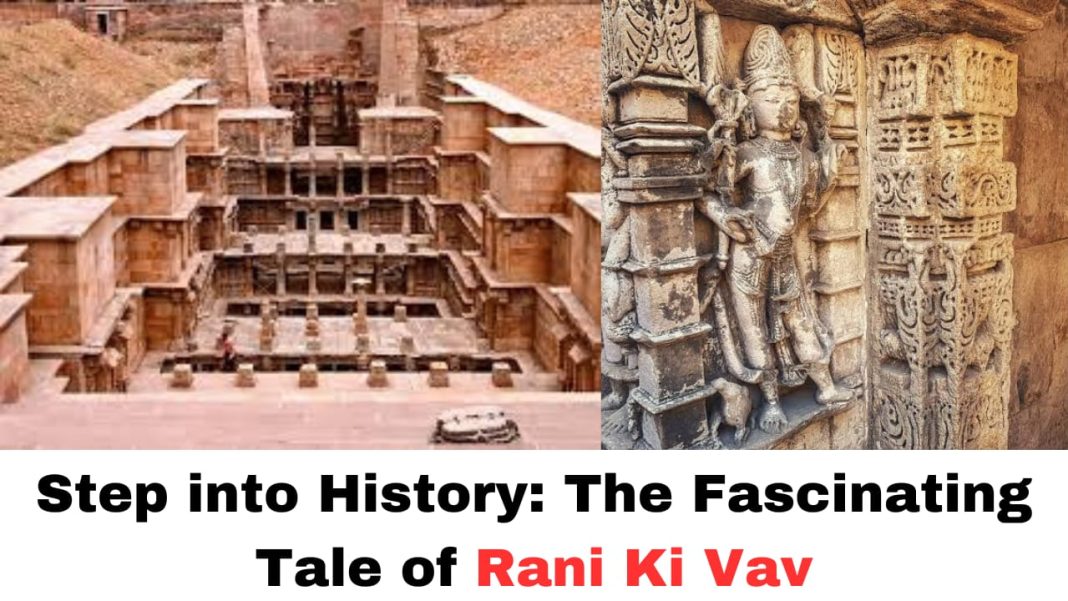Digital News Guru History Desk:
Rani Ki Vav, Patan: A Timeless Marvel of Ancient India
Nestled in the quaint town of Patan in Gujarat, Rani Ki Vav (Queen’s Stepwell) is a stunning architectural masterpiece and a UNESCO World Heritage Site. Built during the 11th century, this subterranean structure exemplifies India’s engineering brilliance, artistic finesse, and cultural heritage. Originally constructed as a water reservoir, Rani Ki Vav has transcended its utilitarian purpose to become a symbol of devotion, history, and beauty.
In this article, we delve into the history, architecture, cultural significance, and the unique features of Rani Ki Vav, one of India’s most exquisite historical monuments.
Historical Background
Rani Ki Vav was commissioned by Queen Udayamati in memory of her husband, King Bhimdev I of the Solanki dynasty, around the year 1063 AD. The Solankis, also known as the Chalukyas of Gujarat, were known for their contributions to architecture, especially temple and stepwell construction.

The stepwell served both practical and spiritual purposes. In arid Gujarat, water conservation was crucial, and stepwells were a sophisticated solution to store water while providing a space for social and religious gatherings. Unfortunately, Rani Ki Vav was buried under silt following severe flooding of the nearby Saraswati River. Rediscovered in the 1940s and extensively excavated in the 1980s, it was restored to its former glory and declared a UNESCO World Heritage Site in 2014.
Architectural Grandeur
Rani Ki Vav is celebrated for its intricate design, combining engineering precision with artistic excellence. The stepwell stretches 64 meters in length, 20 meters in width, and descends approximately 27 meters deep. It is divided into seven levels of stairs, each adorned with intricate carvings and sculptures.
- Structural Layout
The stepwell is oriented east to west, with a rectangular tank at its base for water collection. It consists of:
- Entrance Pavilion: This marks the beginning of the descent into the stepwell.
- Stepped Corridors: Seven flights of stairs lead visitors to the bottom, each level intricately carved with sculptures.
- Well Shaft: The circular well is the core of the structure, where water was stored.
- Intricate Carvings
Rani Ki Vav is often referred to as an “inverted temple,” as its walls and pillars are adorned with over 500 principal sculptures and 1,000 minor motifs, depicting religious, mythological, and secular themes.
- Deities and Mythological Scenes: The walls are intricately carved with statues of gods and goddesses, including Vishnu, Shiva, Brahma, and their various incarnations. Particularly notable are the Dasavatara, the ten incarnations of Lord Vishnu.
- Apsaras and Yoginis: Beautifully detailed sculptures of apsaras (celestial dancers) and yoginis in various poses highlight the exceptional artistry of the era.
- Floral and Geometric Patterns: These carvings add to the aesthetic appeal and showcase the Solanki dynasty’s artistry.
- Symbolism and Themes
The carvings at Rani Ki Vav not only depict religious iconography but also convey themes of fertility, prosperity, and the sanctity of water. Water, considered a source of life, was deeply revered, and stepwells like Rani Ki Vav were seen as a bridge between the heavens and the earth.

Cultural and Historical Significance
Rani Ki Vav holds immense historical and cultural significance. It stands as a testament to the ingenuity of ancient Indian architects and engineers, who created sustainable water management systems that were also works of art. Moreover, it showcases the prominence of women in Indian history, with Queen Udayamati commissioning this magnificent structure.
The stepwell also reflects the spiritual and cultural ethos of the Solanki period. Its design incorporates religious symbolism, emphasizing the sacred relationship between water and life in Hindu philosophy. The inclusion of mythological motifs further highlights the influence of religion on everyday life during that era.
UNESCO World Heritage Status
In 2014, Rani Ki Vav was inscribed as a UNESCO World Heritage Site for its “exceptional testimony to the artistic and technological achievements of stepwell architecture in India.” The recognition brought global attention to this architectural gem, underscoring its importance as a cultural treasure and a unique example of subterranean architecture.
Tourism and Modern Relevance
Today, Rani Ki Vav attracts tourists, historians, and art enthusiasts from around the world. Managed by the Archaeological Survey of India (ASI), the site is well-preserved and offers a glimpse into India’s rich history.
Tourist Highlights
- Photography: The intricate carvings and play of light and shadow in the stepwell make it a paradise for photographers.
- Cultural Events: Occasionally, cultural events and exhibitions are held at the site, celebrating Gujarat’s heritage.
- Nearby Attractions: Visitors often combine their trip to Rani Ki Vav with visits to nearby attractions such as the Modhera Sun Temple and Patola saree workshops in Patan.
Water Conservation Legacy
In an era of water scarcity and climate change, Rani Ki Vav serves as a reminder of ancient India’s sustainable practices. The ingenuity of creating stepwells for water storage and its integration with cultural and social life offers lessons for modern urban planning.
How to Visit Rani Ki Vav
- Location: Patan, Gujarat, approximately 125 kilometers from Ahmedabad.
- Timings: Open from 8:00 AM to 6:00 PM daily.
- Entry Fee: Nominal entry fee for Indian and foreign visitors.
- Best Time to Visit: October to March, when the weather is pleasant.
The site is well-connected by road, and visitors can also access Patan via rail or flights to Ahmedabad, followed by a short drive.

Conclusion
Rani Ki Vav is more than just a stepwell; it is a monument to India’s historical ingenuity, cultural richness, and artistic excellence. It exemplifies the intersection of utility and beauty, serving as a source of water and a place of worship, while also narrating stories from India’s mythological and spiritual traditions.
Visiting Rani Ki Vav is like stepping back in time, offering a rare opportunity to witness the brilliance of ancient Indian craftsmanship and the enduring legacy of its cultural heritage. Whether you are a history enthusiast, an art lover, or a curious traveler, Rani Ki Vav promises an unforgettable experience, leaving you inspired by its timeless beauty and the wisdom of its creators.
You May Also Read: Maharashtra: Man Allegedly Sets Wife on Fire After Third Daughter’s Birth








